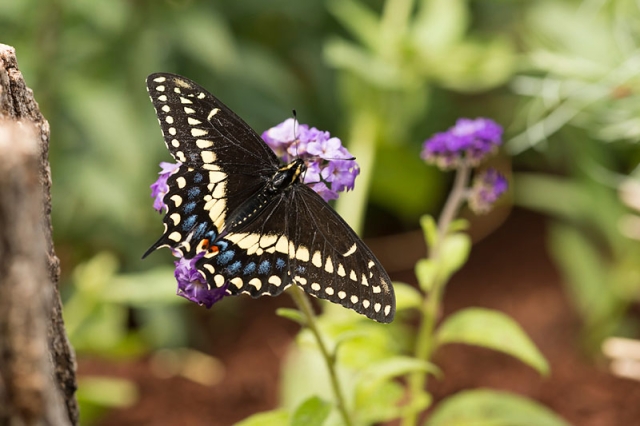Build a Butterfly Garden in 5 Steps
June 24, 2021
Tiffany Coleman
, Marketing Manager
It's National Pollinator Week, and what better way to show local pollinators some love than to create a special habitat just for them? Follow our five easy steps below to build your own butterfly garden--and be sure to stop by the butterfly house at Chatfield Farms for inspiration, tips, identification of native butterflies and the perfect plants for your design.

Black swallowtail on phlox
- Know the native butterflies This will greatly help in planting the appropriate host plants for the larvae.
- Select the best location An open, sunny, protected location is ideal for a butterfly garden. Shaded and windswept areas are less attractive to butterflies.
- Create a design Design the garden to incorporate plants for the entire life cycle of the butterfly, which includes food plants for the caterpillars and nectar plants for the adult butterflies. Plant in clusters to make it easier for butterflies to locate. Incorporate sources of shelter such as tall trees, shrubs or grasses. Adding rocks in sunny, windless spots in the garden will provide butterflies a place to bask in the sun and heat up their wing muscles for flight.
- Select the right plants Flower selection is influenced by nectar, color, fragrance and flower shape. A butterfly’s proboscis, the organ that takes up nectar, is a tubular structure similar to a straw. Hence, the most appropriate nectar flower for a butterfly will be tubular. Butterflies can see in the full spectrum of colors as well as ultraviolet light and favor flowers in ranges of purple, white, yellow, pink and blue, though they will also visit orange and red flowers. Many flowers have nectar guides, visible only in ultraviolet light that guide the butterfly to the flower’s nectary. Because butterflies are extremely long-legged, they need a stable platform-like structure to land on. An ideal butterfly nectar plant will have numerous clusters of small, short-tubed flowers with wide, flat rims.
- Maintenance After a butterfly garden is created, maintenance is very easy. The major work required is pruning, deadheading, weeding and watering. Periodic pruning allows good air circulation around the plants. Deadheading, the removal of spent flowers, prolongs blooming time and encourages the production of more flowers. Butterflies are sensitive to chemicals. For this reason, insecticides, fungicides and herbicides cannot be used in a garden designed to attract butterflies.
"How to Create a Butterfly Garden" by Sarada Krishnan, Ph.D., director of horticulture & the Center for Global Initiatives, was originally published in the spring 2016 issue of Inside the Gardens. Read recent issues online.
Categories
Add new comment